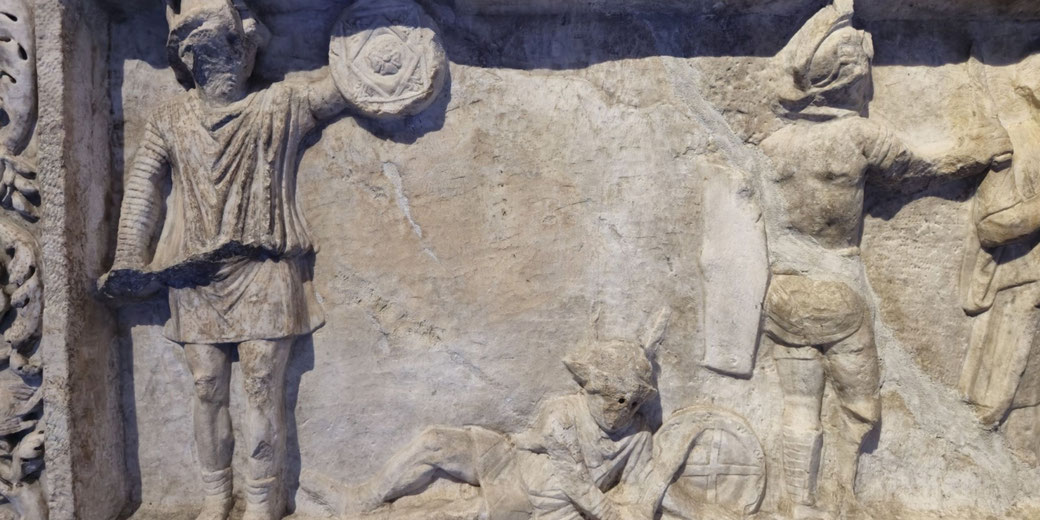The secret lives of gladiators: Behind the scenes of ancient Rome's bloodiest spectacle

The gladiatorial games were one of the most popular and bloody shows in ancient Rome. Thousands of spectators went to the Colosseum regularly to watch these trained fighters battle each other, all for the entertainment of the crowd.
However, behind the scenes of these brutal games, lived a hidden world of gladiators, whose lives were very different from the violent public image.
Who were the gladiators?
In ancient Rome, gladiators were often slaves or prisoners of war, who were forced into this role.
They actually cost a lot of money to train and look after, and so, they were an extremely valuable asset to their owners.
They trained in special schools called ludi gladiatorii, where they learned sword fighting, wrestling, and a range of other combat skills.
This training was hard. The gladiators had to follow a strict routine of diet and exercise.
Even though the members of the public saw gladiators as superstars and were made of the stuff of legends, their daily lives were far from glamorous.
Brutal training regime
Ancient gladiators underwent intensive and very focused training designed to prepare them for fighting in the arena.
In particular, their schools were usually located near the arenas where the games happened, such as the Colosseum in Rome.
These sites included weapon stores for keeping equipment, medical rooms for treating wounds, and even areas for caring for sets and stage items.
The lanista, who was often a former gladiator himself, managed every part of daily life and training.
He led routines, planned practice fights and supervised enslaved helpers.

At first, trainees practised with heavy wooden weapons, which reduced the risk of serious injury while they built their basic skills.
For practice, each trainee used a wooden stake called the palus to simulate an opponent, upon which they would practise strikes and footwork against this fixed target.
Next, gladiators moved on to sparring with fellow trainees and to drills that recreated the conditions of actual matches.
If followed successfully, this staged progression helped each fighter enter the arena physically strong and skilled in the tactics he needed for his fighting category.
For example, a Thracian gladiator practised with a curved sword and a small shield, while a Retiarius learnt to use a trident and a net.
Carefully controlled diets
Archaeological evidence shows that gladiators in ancient Rome ate a diet high in carbohydrates, such as lentils, and barley, which were cheap and easy to get.
Meanwhile, they drank a sour, vinegar-like drink mixed with ash. It was believed that this helped them stay hydrated during training and fights while also providing calcium for strong bones.
Meat was a treat in ancient Rome and was eaten in smaller amounts, mostly in the form of pork.
Gladiator social norms
Gladiators lived under a strict ranking system, with the most successful fighters getting the best treatment while the weaker ones got less.
The most famous gained both fame and wealth from their victories, and, if they were lucky, they could even earn their freedom.
However, for most, life was a constant cycle of violence, fear, and uncertainty.
Regardless, some gladiators formed close bonds with each other. This was thanks to the fact that they lived together in barracks, which created its own social groups.
Would you really want to be a gladiator?
The gladiatorial games were a violent and bloody show, but the lives of the men who fought in them were more complicated than many people realise.
The average life expectancy of a gladiator remained short and often totalled only a few fights before suffering severe injury or death.
Estimates suggested about one in five or one in ten contests proved fatal, depending on the period and the type of combat.
However, gladiators also lived with a deep mental anguish, as, on one hand, they were celebrated as the epitome of Roman courage and discipline, but on the other hand, they occupied the lowest levels in society and even compared with prostitutes for selling their bodies in the arena.
They were opened called auctorati and infames, which stripped them of any civil rights.
Even the daily exposure to deadly danger demanded great mental strength and no doubt meant that some experienced lasting mental distress.
Over time, these experiences must have taken a toll. Symptoms that we would diagnose as modern post-traumatic stress disorder would likely have affected many gladiators, but it was neither acknowledged nor treated at the time.
Perhaps this is why we hear about certain religious rituals that gladiators took part in.
They may have offered limited relief to the constant stress they were under, but it did nothing to halt the repeated experience of violence that was the best and worst part of their role.
What do you need help with?
Download ready-to-use digital learning resources
Copyright © History Skills 2014-2025.
Contact via email
With the exception of links to external sites, some historical sources and extracts from specific publications, all content on this website is copyrighted by History Skills. This content may not be copied, republished or redistributed without written permission from the website creator. Please use the Contact page to obtain relevant permission.





